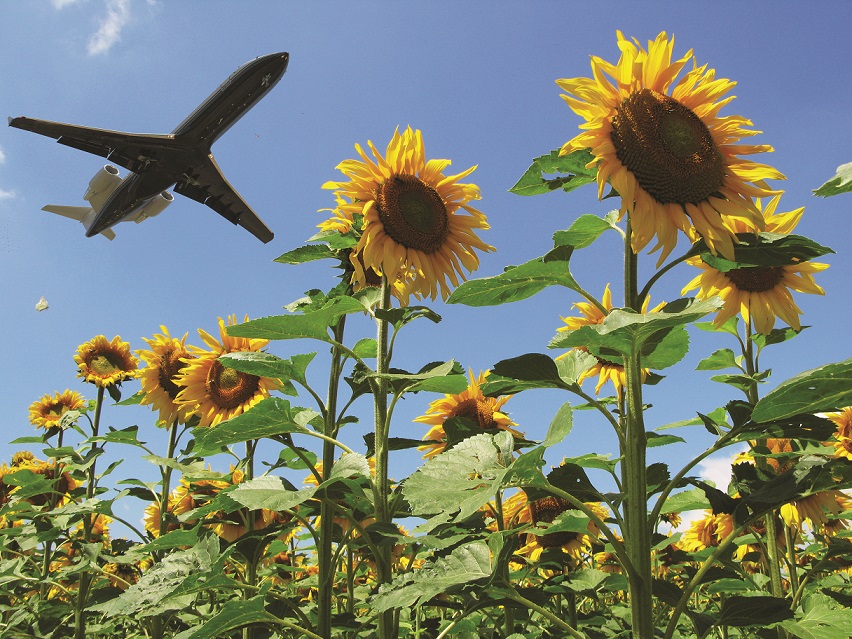Stepping stones to net zero
11 / 04 / 2023

Photo: Shutterstock
Now that the UN’s Civil Aviation Authority has joined IATA in its commitment to net-zero carbon emissions from air transport by 2050, it’s important to set out some concrete steps.
In October last year, the United Nations’ Civil Aviation Authority adopted the Long Term Aspirational Goal of net-zero carbon emissions from air transport by 2050.
The move was welcomed by IATA as it mirrored a commitment made 12 months earlier by the airline association’s own members to meet the net-zero target by 2050.
However, while having targets is all well and good, there must also be a plan in place to ensure those ambitions are met.
IATA says that success will require the coordinated and combined efforts of the entire industry – airlines, airports, air navigation service providers and manufacturers – as well as significant government support.
As part of its emissions reduction strategy, IATA has identified four key areas to meet the target.
The use of Sustainable Aviation Fuel (SAF) is core to the strategy. SAF will need to be sourced from feedstocks that do not degrade the environment or compete with food or water, IATA says.
Investment in new aircraft technology, including radical new aerodynamic and alternative propulsion (electric or hydrogen) solutions, is another area of focus.
A continued improvement in infrastructure and operational efficiency, with a focus on improved air traffic management, is also important, IATA says.
And finally, the industry will need to adopt approved offsets, including carbon capture and storage technology.
Sustainable fuel
One potential scenario to achieve the goal is a 65% reduction in emissions through the use of SAF, 13% from hydrogen and electric propulsion, 3% from more efficient operations and 19% through offsets and eventually through carbon capture.
Speaking at last year’s World Cargo Symposium, IATA global head of cargo, Brendan Sullivan said: “SAF is the key to achieving net-zero emissions. Airlines used every drop that was available in 2021. And it will be the same this year.
“The challenge is SAF production capacity. The solution is government incentives. With the right incentives, we could see 30bn litres of SAF [produced] by 2030. That would be a tipping point towards our net-zero ambition of ample SAF quantities at affordable prices.”
Looking further ahead, IATA estimates that around 449bn litres of SAF will need to be available – compared with an estimated 8bn in 2025 – in order to reach the 2050 net-zero target.
“This will require a massive increase in production in order to meet demand,” says the association. “The largest acceleration is expected in the 2030s as policy support becomes global, SAF becomes competitive with fossil kerosene, and credible offsets become scarcer.”
Technology advances
While SAF is expected to be the largest contributor to emission reductions, aircraft technology is also expected to play a key
role.
“Geared turbofan engines and further advances in design will drive a further 15-25% fuel efficiency improvements over the next two decades,” says IATA.
“From the mid-2030s, however, radical new propulsion technologies and advanced designs may become viable that offer the chance to move away from traditional jet engine and tube-and-wing flight.”
These new technologies include hybrid-electric engines that combine combustion and electric propulsion systems; fully electric aircraft; hydrogen-powered aircraft; and new aircraft configurations such as blended wing and canard wing designs.
However, the entry into service of some of these technologies is years away.
Offsetting the damage
Offsets also have a key role to play in helping the industry meet its targets and aviation has developed its own scheme to make sure the industry is on target.
Under the International Civil Aviation Organization’s CORSIA offset scheme, from 2021 until 2026, flights between states that volunteer to participate in the scheme will be subject to offsetting requirements. Then from 2027, all international flights will be subject to offsetting requirements, although flights to and from many developing countries and islands will be exempt unless they participate on a voluntary basis.














